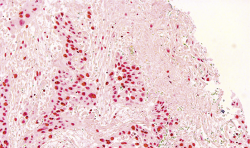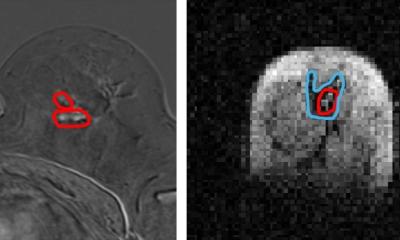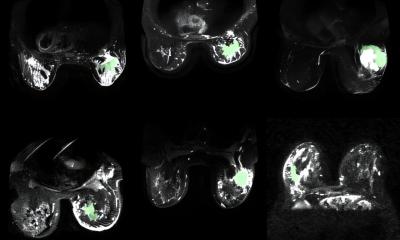Immune system
Outwitting cancermechanisms
The human immune system is usually very efficient in protecting the body against diseases by eliminating pathogens as well as infected, damaged or otherwise suspicious cells. However, it often fails because tumours have developed efficient strategies that hamper the system’s ability to detect and destroy the cancer cells.
Report. Ludger Weß

For example, certain structures on the surface of immune cells, such as T cells, act as regulators of the immune system, so that T cells can be prevented from attacking healthy tissue. Cancer cells often produce enzymes and ligands able to manipulate these regulators. In this way they can de-activate T cells that are directed against characteristic structures on the surface of cancer cells. The T cells lose their ability to bind to the tumours cells, and thus no action against the tumour is initiated.
Most recently, new drugs have been approved that can remove the brakes that tumours apply to the immune system. Antibodies blocking the negative regulators of the immune system, the so-called ‘checkpoint inhibitors’, are tremendously successful because they restore the body’s spontaneous anti-tumour immune response. One example is Yervoy ipilimumab, a monoclonal antibody targeting CTLA-4, a protein receptor that down-regulates the immune system. These drugs lead to response rates of up to nearly 50% in various cancers.
Even though these figures are impressive, not all treated patients have their spontaneous anti-tumour immunity restored. Additionally, because the drug leads to a general activation of the immune system, some patients experience autoimmune side effects.
Fortunately, however, new strategies to overcome those limitations are in development. One approach aims to address and change the tumour’s immune environment. ‘We are delivering modulating signalling molecules to the micro-environment of tumours and infected cells,’ explains Dr Frank Schnieders, CEO of Provecs Medical GmbH in Germany. ‘Once present in sufficient concentration, they restore the vulnerability of diseased cells and activate the body’s own defence mechanisms locally and systemically.’
A local, transient expression of these factors for a few days, is sufficient to mount a lasting, systemic immune response against the diseased cells, resulting in the elimination of tumour cells, or of cells harbouring the pathogens, Schnieders adds. A first product, IM01, is in late preclinical development to treat bladder cancer and already licensed to an undisclosed pharmaceuticals partner.
At the end of November, researchers from Dutch firm ISA Pharmaceuticals introduced a different approach in Nature: With a team from the Washington University St. Louis they analysed the T cells unblocked by the checkpoint inhibitor drugs and the structures the T cells were directed against. This led to the discovery of two interesting new antigens on the surface of tumour cells.
In a second step, the scientists demonstrated that a mixture of two synthetic long peptides (SLPs), each incorporating one of the mutant amino acid sequence and an adjuvant, were able to eradicate the tumour as effectively as checkpoint immunotherapy.
‘These findings offer important mechanistic insights into the mode of action of checkpoint immune regulators, and point the way towards personalised approaches based on the SLP immunotherapy concept,’ said Professor Cornelis Melief, Chief Scientific Officer of ISA and a co-author of the paper. ‘Checkpoint blocking is capable of activating existing inert T cells against mutant antigens. Now we know that an adjuvanted SLP-based immunotherapy, with similar anti-tumour effects to checkpoint immunotherapy, can be created.’
The preliminary successes of cancer immunotherapy clearly demonstrate the potential of this approach. Most likely, a combination of various strategies will in the future lead to even higher response rates and less side effects in treating cancer.
23.12.2014






